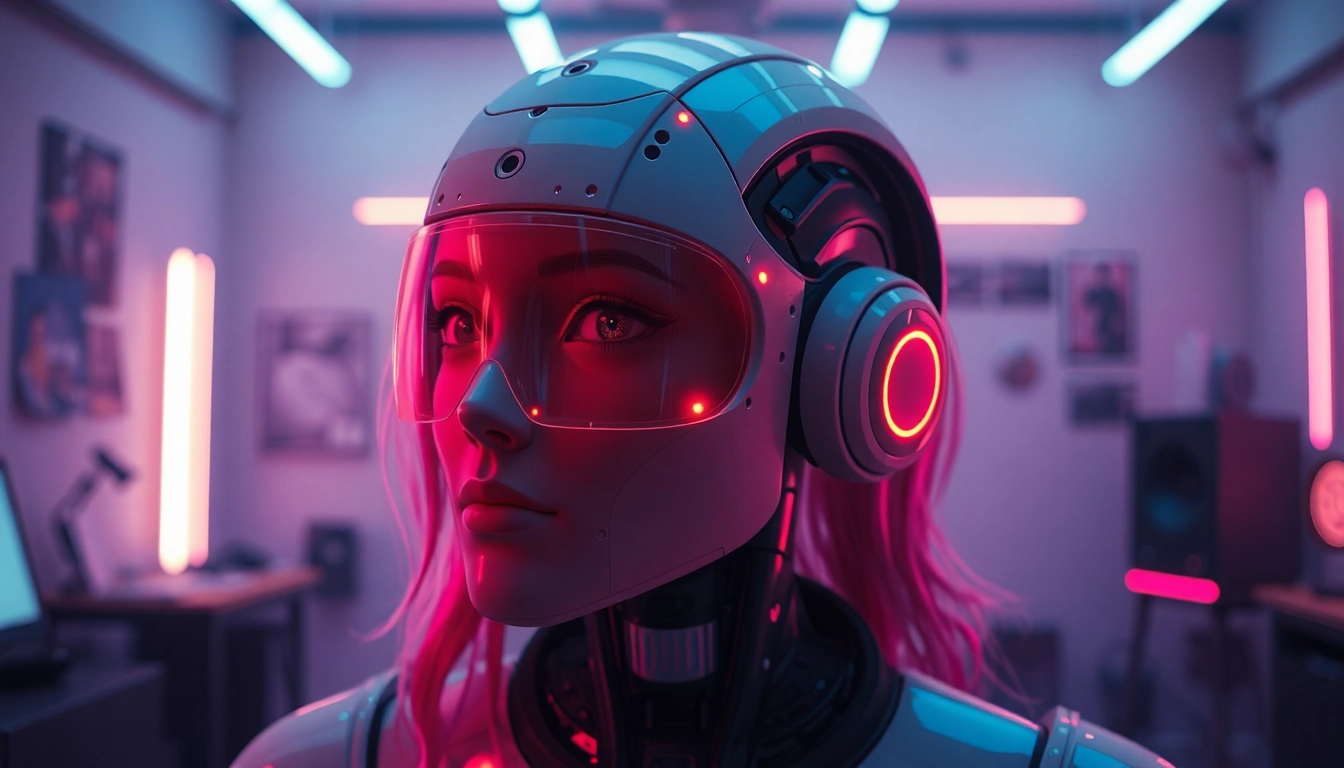5 NSFW Image Generator Tools for Realistic AI Art in 2025
The NSFW AI generation landscape in 2025 has matured beyond novelty, blending hyperrealistic rendering with emotion-aware AI and deep customization. Creative teams and independent makers alike are exploring how these tools can power brand narratives, intimate storytelling, and cinematic visuals while navigating safety and governance. This guide synthesizes the current top options and offers practical guidance for selecting, implementing, and measuring impact across five leading NSFW image and video generators.
For readers seeking a concise overview, see NSFW Image Generator as a starting point to compare capabilities, use cases, and deployment considerations across the five platforms discussed below.
NSFW Image Generator Landscape in 2025
Core capabilities of NSFW Image Generator tools
Modern NSFW image tools deliver more than static renders. Realism is achieved through advanced texture synthesis, lighting simulation, and facial expression modeling that adapts to prompts. Multi-style rendering enables manga, photorealistic, and cinematic aesthetics within a single platform. AI-driven emotion sensing enhances interactions, guiding visuals to match tone and narrative intent, whether you’re composing a character portrait or a story panel sequence. These capabilities are paired with looped prompts, library assets, and parameterized controls that let creators dial in body type, mood, setting, and attire with precision.
Safety, moderation, and compliance considerations
As realism increases, so does the need for governance. Leading tools implement content filters, user agreements, and moderation rails to prevent non-consensual, underage, or exploitative outputs. Organizations should enforce age verification where appropriate, audit model prompts, and maintain clear on-platform guidelines. Privacy protections—such as data-minimization, opt-in data usage for model fine-tuning, and strict access controls—are essential to sustain trust with audiences and collaborators.
Performance metrics: realism, speed, and control
Effectiveness is measured through realism scores, prompt-to-output latency, and fidelity to stylistic constraints. Speed matters for iterative workflows, while control granularity—sliders or presets for texture, lighting, and emotion—drives efficiency. Track output variance across sessions and assess consistency when re-generating scenes to ensure repeatability for campaigns or serialized storytelling.
Dream Companion: Realism, customization, and emotion AI
Character realism and emotion sensing
Dream Companion stands out for its emphasis on emotionally aware AI partners. Realism extends beyond anatomy to nuanced facial micro-expressions, vocal tone, and subtle gestures that respond to user inputs in real time. This creates an immersive loop where prompts evolve into complex, emotionally coherent scenes or sequences, supporting narrative-driven NSFW art and cinematic storytelling.
Prompt engineering for precise outputs
Effective prompts combine granular descriptors (body type, posture, lighting, texture) with mood cues (calm, playful, tense). Iterative prompting—refining prompts based on previews—yields higher fidelity images and reduces post-generation edits. Maintain style consistency by locking key parameters (theme, color palette, camera angle) while varying secondary details to explore composition safely and efficiently.
Workflow integration and measurement
Integrate Dream Companion into production pipelines by aligning prompts with storyboards, asset libraries, and version control. Establish KPIs such as time-to-first-draft, revision cycles, and audience engagement metrics for published outputs. A structured review process, including moderation checks and creative pre-approvals, helps balance speed with responsible content governance.
InfluencersGoneWild: AI personas and brand strategy
Brand alignment and audience fit
AI-generated influencers enable scalable, stable brand personas, but success hinges on fitting the target audience’s expectations and platform norms. Align voice, visual style, posting cadence, and narrative arcs with the brand’s identity and community guidelines. Test personas in controlled cohorts to measure resonance before broader deployment.
Content governance and privacy considerations
Governance for influencer-like bots includes clear consent models for collaborators, transparent disclosure of AI-generated content, and safeguards around personal data. Establish privacy-first defaults for image and video sharing, with audit trails to demonstrate compliance and to resolve potential disputes quickly.
Collaboration workflows across servers
Collaborative workflows leverage multi-server content sharing while preserving ownership and moderation standards. Implement version control for character assets, centralized asset libraries, and permission schemas that prevent cross-server policy violations. Regular cross-team reviews help maintain a consistent brand posture as audiences engage across different communities.
Girlfriend.ai: Interactive narratives and visuals
Chat-driven storytelling with visuals
Girlfriend.ai blends dialogue with evolving visuals that reflect conversational mood. This approach is ideal for serialized, mature-themed storytelling where visuals reinforce narrative beats and character development. Keep tracks of story arcs, visual palettes, and key emotional milestones to ensure cohesion across episodes and prompts.
Maintaining mood and narrative consistency
Consistency comes from structured world-building: define character backstories, recurring motifs, and environmental cues. Use standardized prompts for recurring scenes to maintain continuity, and employ a storyline log to track changes in tone, timing, and visual style across sessions.
Safety boundaries and moderation
Establish explicit safety boundaries within conversations and visuals. Implement content filters that prevent illegal or unethical outputs, and integrate human-in-the-loop reviews for high-risk prompts. Regularly update moderation rules in response to evolving platform policies and community feedback.
Aeonfriend & Sugarlab: style variety, quality, and API options
Art styles, textures, and skin tones
Aeonfriend emphasizes rapid, high-quality outputs across multiple art styles, with fine-grained control over textures, skin tones, and environmental details. Sugarlab focuses on cinematic fidelity, offering nuanced shading and filmic grading that elevates hero imagery and sequence work. Together, they provide a broad palette for artists seeking both quick sketches and production-ready assets.
Video rendering and cinematic outputs
Video-capable engines enable frame-accurate sequences, lip-sync, and camera moves that align with script pacing. Real-time previews and batch rendering options accelerate storyboarding, scene planning, and final edits for longer NSFW narratives or branded campaigns.
Developer access and API usage
Both platforms offer API access or token-based developer options, enabling integration with existing asset pipelines, CMS, or collaboration hubs. For teams, API access supports automation, asset tagging, and workflow orchestration, reducing manual steps and ensuring standardization across projects.
Final thoughts on features and implementation
The top NSFW generators of 2025 deliver a spectrum of capabilities—from hyperreal visuals and emotion-aware rendering to brand-ready personas and cinematic video. The optimal choice depends on your goals: for immersive realism and interactive storytelling, Dream Companion remains a leading option; for scalable influencer-style branding, InfluencersGoneWild and Girlfriend.ai offer compelling workflows; for style versatility and production-grade outputs, Aeonfriend and Sugarlab provide complementary strengths. Implement with clear governance, robust moderation, and measurable success metrics to ensure creative freedom without compromising safety or compliance.










